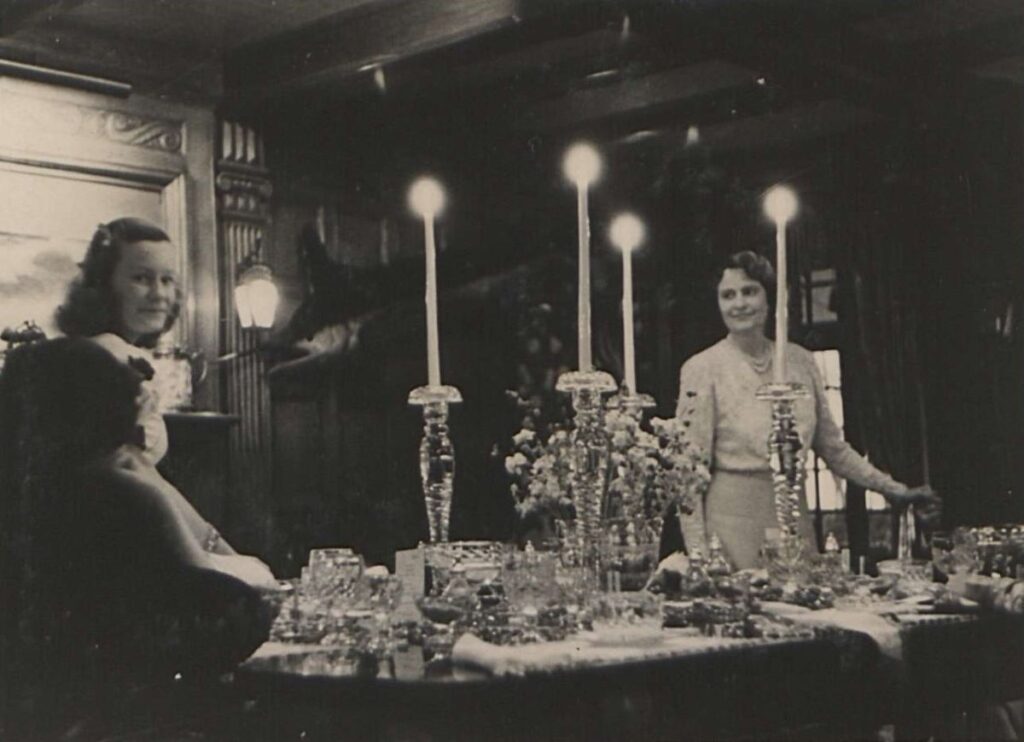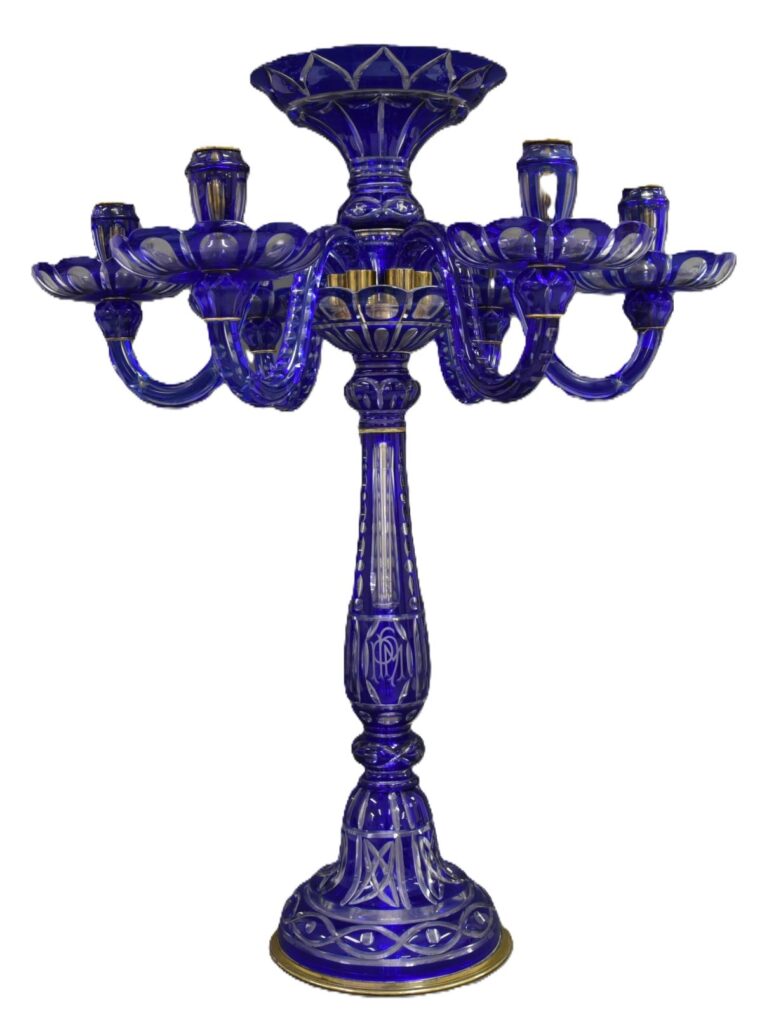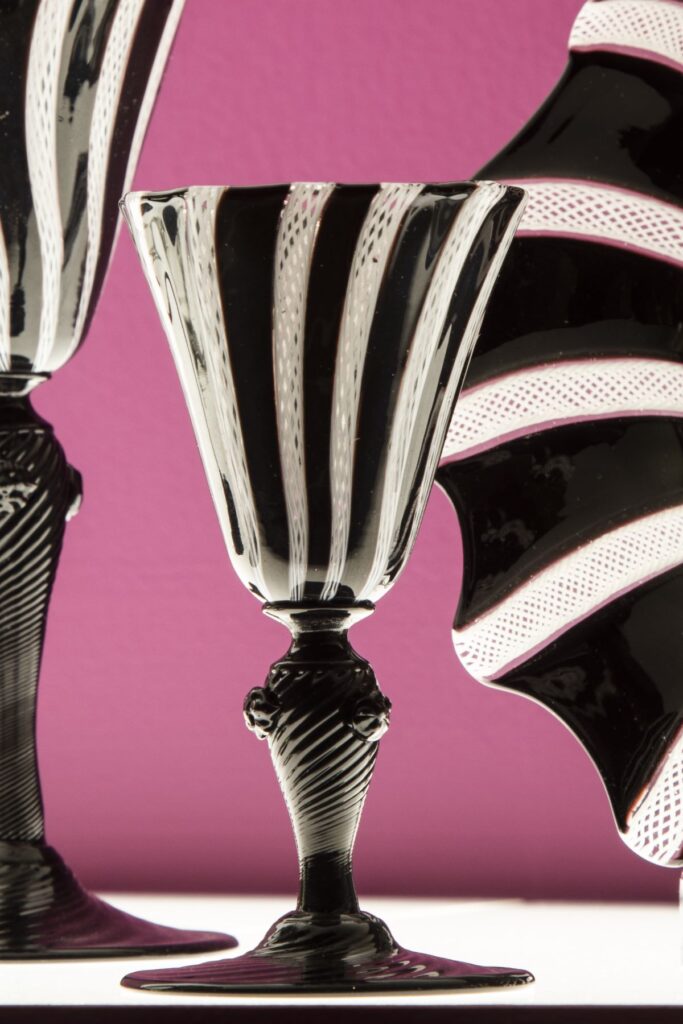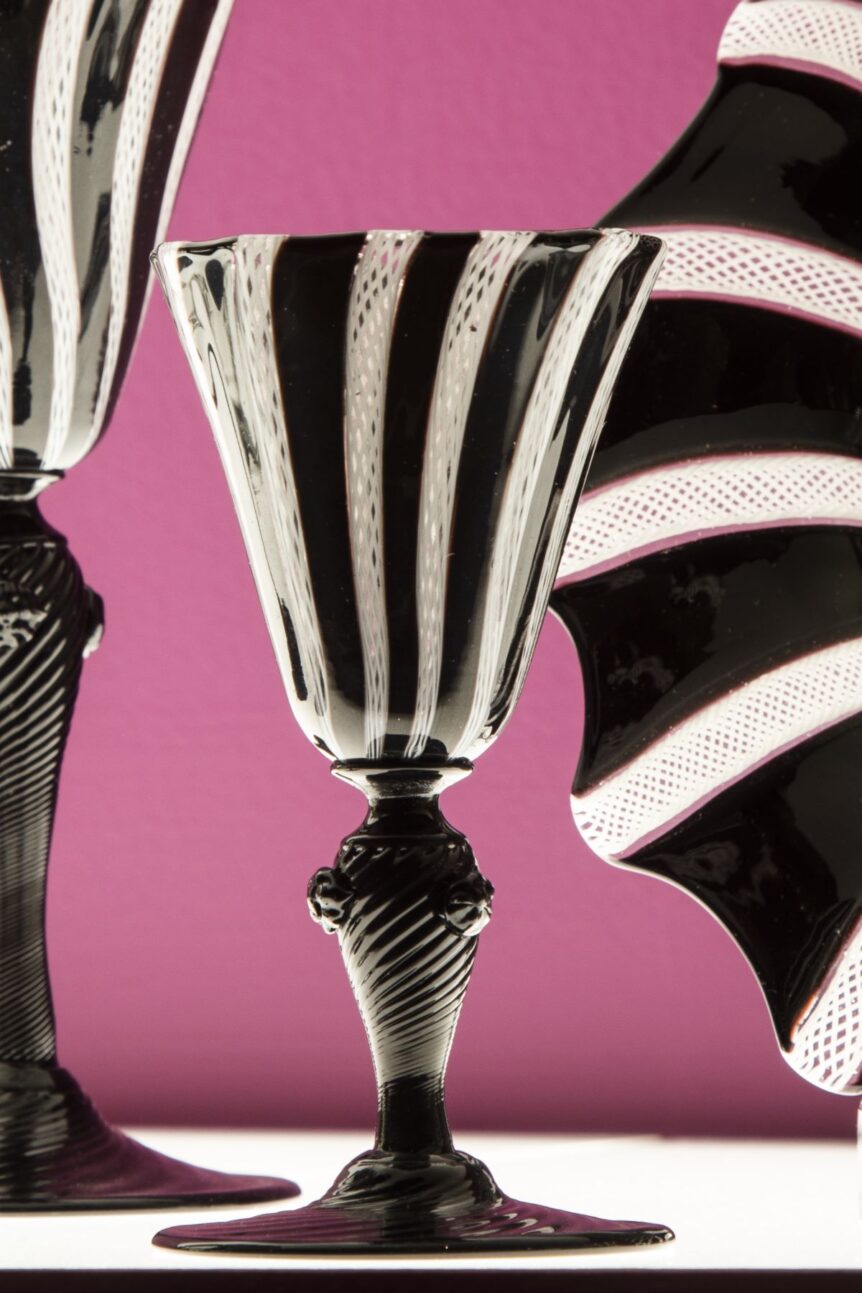
Legendary. No other word so aptly applies to collector and hostess, breakfast-cereal heiress, businesswoman, and philanthropist Marjorie Merriweather Post. This magazine has presented the riches at Hillwood, her Washington, DC, home at least twice over the past seventy years, first in 1962 and then with a full special issue in March 2003. More recently, late last year Rizzoli published The Houses and Collections of Marjorie Merriweather Post, exploring the fine and decorative arts Post collected and lived with over the years, not only at Hillwood, but also at her many other residences and yachts. The book is a fascinating read and a treasury of exquisite porcelains and portraiture, furniture and Fabergé, silver and gold, jewelry and fashion. To coincide with its publication, Wilfried Zeisler, Hillwood’s chief curator and the book’s lead author, organized an exhibition that showcases a lesser-known aspect of Post’s collecting: glass.
On view at Hillwood until January 14, 2024, Glass: Art. Beauty. Design includes some three hundred pieces, primarily from Hillwood’s own collection but also including a number of loans, altogether illustrating glass’s myriad decorative and useful forms and functions from ancient times to the present, while also underscoring Marjorie Post’s gift for interior decoration and connoisseurship. Considered one of the wealthiest women in the United States during her lifetime, Post could well afford to collect or commission the lavish artworks and furnishings she desired or needed for her homes and for the ceaseless entertaining she did, hosting politicians, diplomats, celebrities, friends, and business associates. As any visitor to Hillwood knows, her preferences were for imperial Russian objects and eighteenth-century French furniture, tapestries, porcelains, and paintings. But there is much more, including some sixteen hundred pieces of glass, not only from France and Russia but also from Italy, Bohemia, England, and the United States.
Shown here are pieces from a black and white set very much in the art deco mode that Post acquired for her apartment in Manhattan in the 1920s. Attributed to Salviati and Company on Murano, it was probably originally a service for up to twenty-four and includes glasses for red and white wine, champagne, and water, as well as finger bowls and saucers.


In 1935 Post commissioned a quite different set in cut glass from T. G. Hawkes of Corning, New York, for use on her yacht Sea Cloud. The archival photograph of Post and her daughter Dina Merrill illustrated here testifies to the service for twelve’s glamorous use aboard ship.
On a more monumental scale, the nearly four-foot-tall blue glass candelabra speaks to Post’s flair for color, seen in a rainbow of objects in the collection. She was known to set color-themed tables for dinners, coordinating dishes, glassware, flowers, and candleholders all of the same hue. Post commissioned the monogrammed blue candelabra from the Harrach glassworks when vacationing in Karlsbad (today Karlovy Vary in the Czech Republic) in 1929, along with a large set of glassware described as “cristal dark blue” in the original invoice.
Other highlights of the show include two enormous chandeliers by the renowned Baccarat glassworks, probably originally acquired in the 1930s but virtually forgotten in storage for decades. Complementing the historical pieces, are works by a number of contemporary glass artists that showcase glass’s continuing glittering possibilities. Go see it if you can.

